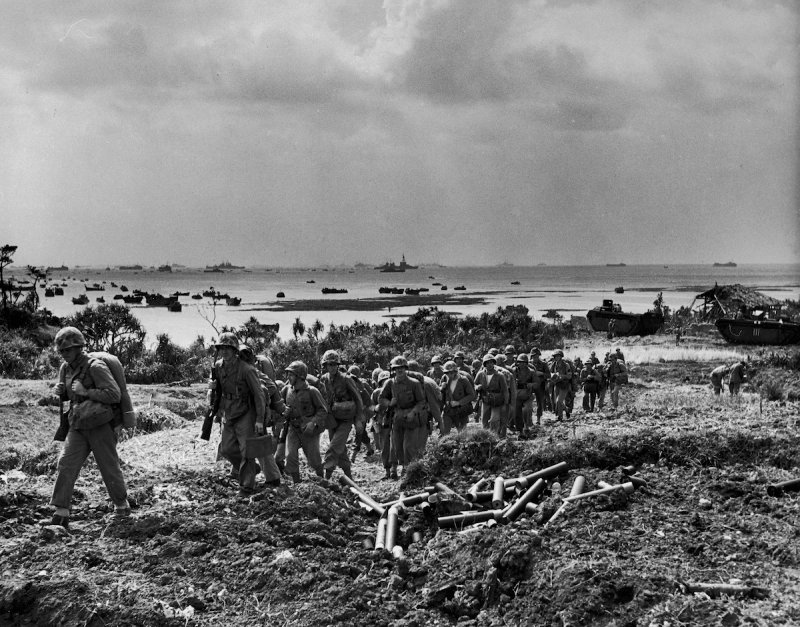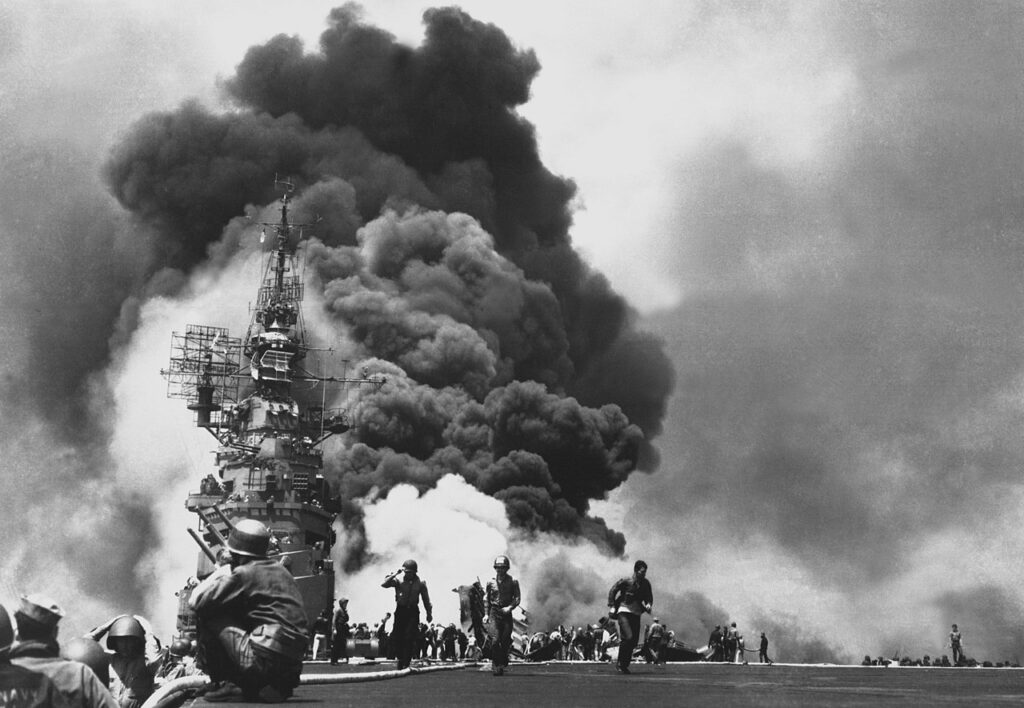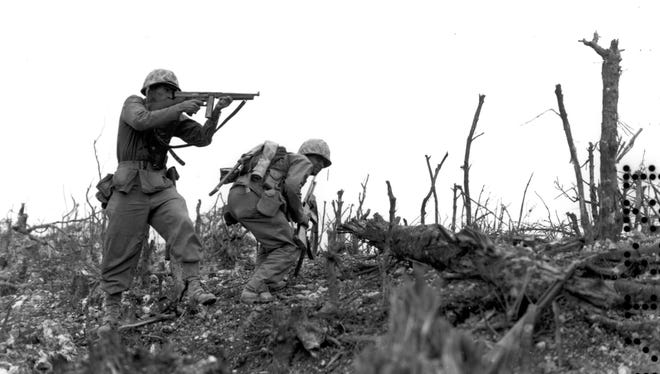The Battle of Okinawa was the final major battle of World War II and dubbed “the Typhoon of Steel”, was one of the bloodiest battles in the Pacific war. On April 1st, 1945, the Navy’s Fifth Fleet and over 180,000 U.S. Army and U.S. Marine Corps descended on the west coast of central Okinawa. As part of Operation Iceberg, the plan was to invade and occupy the Ryukyu Islands, including Okinawa. Despite resulting in an Allied victory, the ferocious battle on land, sea and in the air led to heavy losses on both sides.
The Island of Okinawa
The war on the European front was coming to an end by the time American forces laned on Okinawa. Much of Nazi-occupied Europe had been liberated by Allied and Soviet troops and Germany’s surrender was just weeks away. However, in the Pacific theatre, Japan’s Home Islands continued to be conquered by U.S. forces, one after another. After U.S. victory in the fierce Battle of Iwo Jima, they set their sights on the secluded Island of Okinawa, their final stop before reaching Japan.
With Okinawa’s 466 square miles of trees, hills and dense foliage, it was the ideal location for the Japanese to defend their homeland. They were aware that if Okinawa fell, Japan would too, and therefore, this battle was the last chance. The U.S. knew that if the Japanese invasion was to be successful, securing the airbases in Okinawa was crucial
The Beachhead Landings
As dawn fell on April 1st, the Fifth Fleet launched a massive bombardment to support a troop landing against Japanese defenses on the Island. The anticipation was that the beach landings were going to be even more brutal and violent than D-Day. However, the Fifth Fleet’s offensive attack deemed to be mostly in vain as unexpectedly, they were met with almost no resistance and could have literally swam to shore unscathed.
Within hours, waves of troops, ammunition, supplies and ammunition were transferred ashore virtually seamlessly. In very little time, the Kadena and Yontan airfields were secured by U.S. troops.

The Japanese Strategy
Okinawa was defended by 130,000 troops of Japan’s 32nd Army, commanded by Lt. General Mitsuru Ushijima. The military force also comprised of an unknown number of unarmed Home Guards (Boeitai) and conscripted civilians.
As U.S. troops advanced inland, they wondered why they still had not been met with enemy resistance. Unknown to them, the absence of resistance was an intentional part of the Japanese Imperial Army’s defense strategy. Instead of firing at the U.S. landing forces, the Japanese soldiers had been instructed to watch and wait for them to reach Shuri, an area of southern Okinawa where a triangle of defensive positions known as the Shuri Defense Line had been constructed by General Ushijima.
The Sinking of Battleship Yamato
Despite enduring intense resistance as they advanced to the Motobo Peninsula, the American soldiers won a decisive battle somewhat quickly, albeit suffering over 1000 casualties. However, along the Shuri Line, they had to overcome several hills which were heavily defended by Japanese troops.
On 7th April, Japan sent Yamato, the largest battleship ever constructed, to launch a surprise attack on the Fifth Fleet with the intention to then destroy the American troops trapped near the Shuri Line. The Japanese had hoped that Yamato would finish off the American fleet but unfortunately for them, the battleship was spotted by Allied submarines who alerted the fleet. The Allies then launched a crippling air attack whereby the battleship was bombarded and sank along with nearly all its crew.
After clearing a series of outposts surrounding the Shuri Line, the American troops fought many intense battles including Sugar Loaf Hill, Horseshoe Ridge, Kakazu Ridge and Half Moon Hill. Heavy rainstorms turned the roads and terrain into watery graveyards of fallen soldiers.
By the time the Americans captured Shuri Castle at the end of May, casualties were massive on both sides. Defeated, the Japanese retreated to the south coast of Okinawa where they took their final stand.
Kamikaze Attacks
The Kamikaze suicide pilot was Japan’s deadliest weapon. On April 4th, the Japanese launched their highly trained Kamikaze pilots on the Allied fleet. Loaded with heavy ammunition, pilots dove their planes into American ships at 500 miles per hour causing colossal damage. The Kamikaze attacks inflicted the heaviest losses ever suffered by the U.S. Navy in a single battle, with almost 5,000 fatalities. In total, 368 Allied ships were damaged, 4,900 men were killed or drowned, 4,800 men were wounded and 763 aircrafts were destroyed.

The Japanese Suicide or Surrender
After the Americans captured Hacksaw ridge, it became clear to the Japanese that any further fighting would be futile. The majority of Japanese troops and citizens of Okinawa believed that they would be immediately killed by the Americans if they were to be captured and therefore, countless decided to take their own lives.
In an attempt to encourage their surrender, General Bucker commenced propaganda warfare and dropped millions of leaflets declaring that the war was not yet lost for Japan. Around 7,000 Japanese soldiers surrendered but most chose to commit suicide.
When it became apparent to General Ushijima and his Chief of Staff, General Cho that Japan had been ultimately defeated, they committed ritual suicide on 22nd June, officially ending the Battle of Okinawa.

